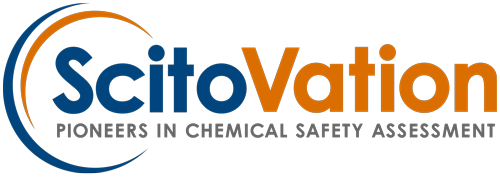Thyroid toxicity
Our approach offers a cost-efficient in both time and resources to address the concerns of a chemical on reproductive development due to thyroid toxicity. The main feature of our approach is that it is relevant to human biology and addresses the main limitation of current approach that there is ample evidence of interspecies difference. Hence, we believe that any client that has compounds in the market or in development that is suspected of affecting thyroid hormone disruption should consider this approach first in lieu of animal studies.
An outstanding question related to the biology of the hypothalamic-pituitary-thyroid (HPT) axis and its potential disruption by chemical exposures is the extent to which experiments based on animal pregnancy models reflect hazard in pregnant humans.
- There is a wealth of examples for xenobiotic induced hypothyroidism reported for pregnant laboratory animal studies (Miller et al. 2009), with limited examples of adverse neurodevelopmental outcomes such as hearing loss and brain development. Epidemiological studies have reported associations between serum biomarkers of thyroid function and exposure to chemicals (Sauer et al. 2020).
- There is a public health concern to protect the fetus from the potential neurodevelopmental health risks posed by maternal exposure to chemicals and endocrine disruption.
- Differences in molecular mechanisms and physiology between humans and rodents have been elucidated for a variety of chemical modes of action. Notably, rodents are more sensitive to agonism of many hepatic nuclear receptors, including constitutive androstane receptor (CAR) and the peroxisome proliferator activated receptor (PPAR), both of which lead to upregulation of drug metabolizing enzymes. A notable mechanism for hypothyroidism is upregulation of Phase II metabolizing enzymes which leads to decreased concentration of circulating thyroid hormone. Because hepatic metabolism is well characterized as a source of species differences, there are outstanding questions about the translation of results from rodent studies showing HPT effects for human health.
- The framework presented here includes a rigorous characterization of possible differences in pharmacodynamics and pharmacokinetics for rodents and humans.
The US EPA high ranking molecular initiating events (MIEs) for thyroid hormone disruptions (EPA FIFRA memorandum, Feb 27, 2018) target the following HPT axis functions:
- Blocking or binding to the sodium/iodine symporter (NIS). NIS is a protein responsible for active transport of iodide from the blood into the thyroid gland.
- Interfering with the enzyme thyroperoxidase (TPO) in the thyroid gland. TPO assists in the formation of precursor iodinated molecules that eventually become thyroid hormones.
- Induction of nuclear receptors (CAR and PXR) and Phase I and II enzymes. Phase I enzymes may affect the chemical deposition and Phase II enzymes (glucuronidation and sulfation) results in increased clearance of thyroid hormones from the body via the bile.
- Induction of iodothyronine deiodinases (DI, DII, and DIII). Hepatic metabolism of the prohormone T4 to the active form, T3, by DI is important and varies across species. Its contribution to T3 formation is normally greater than T3 produced in the thyroid gland.
To provide a framework for interpreting in vitro HPT axis MIEs and/or in vivo HPT disruption observations in animals or humans, we propose the use of biologically based dose response (BBDR) models to describe perturbations in the HPT axis caused by chemicals or drugs, including the sensitive reproductive states of pregnancy and lactation.
